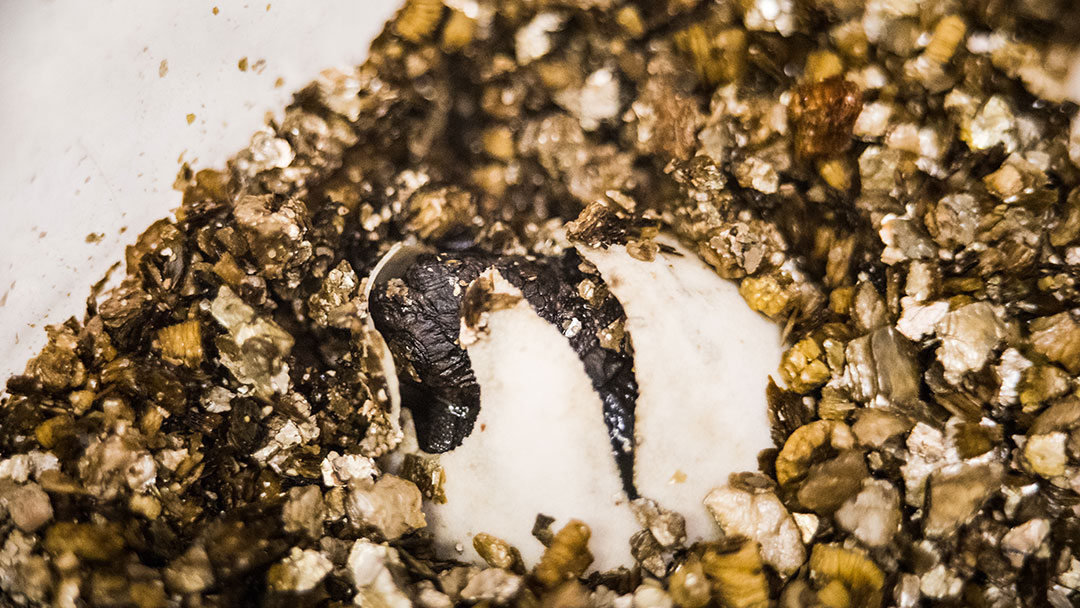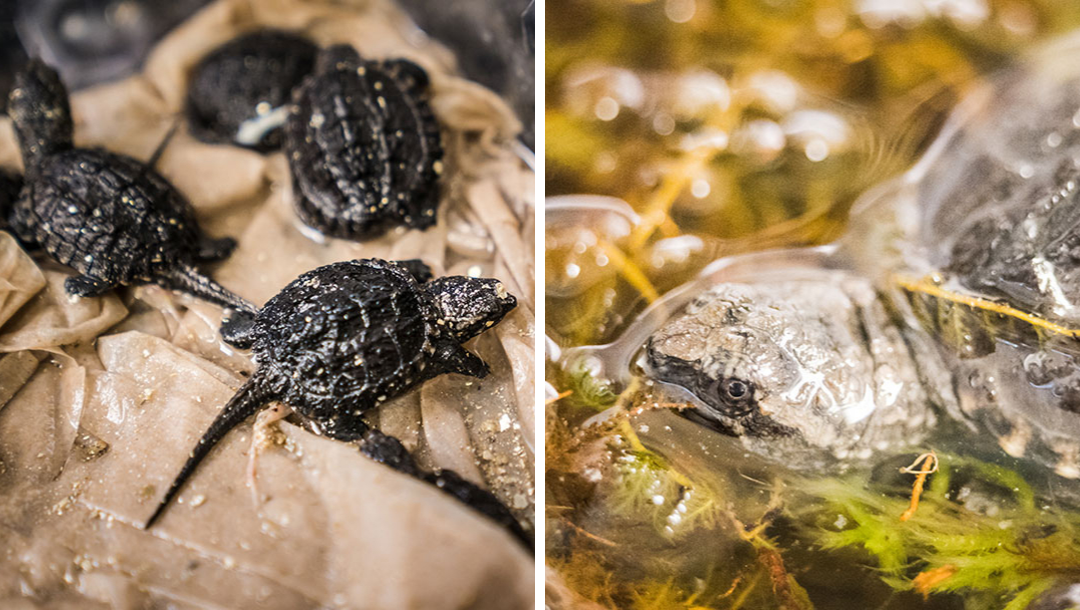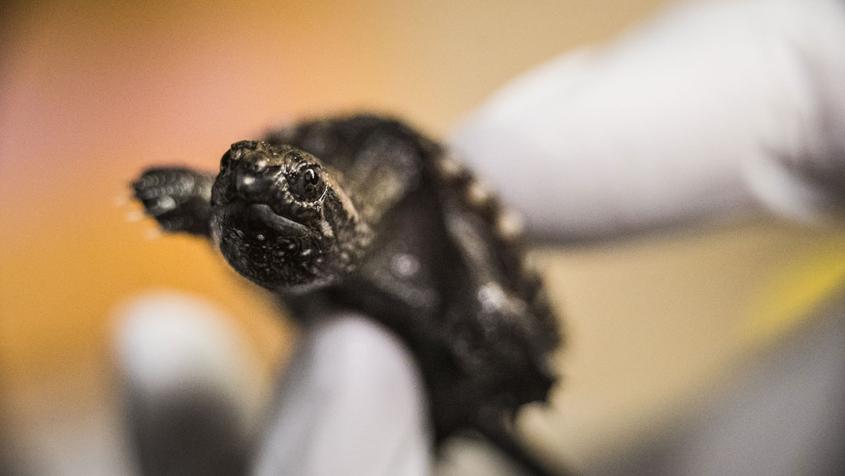Orphaned turtles rescued and released thanks to Cornell wildlife team
In late spring, turtles are on the move to find areas to lay their eggs. Picking the perfect spot, however, may mean crossing high-traffic roads. Between May and July of this year, the Janet L. Swanson Wildlife Hospital at the Cornell University College of Veterinary Medicine rescued approximately 150 eggs from pregnant turtles — known as “gravid” turtles — that were hit by cars and too injured to survive and lay eggs on their own.
“Turtle populations are experiencing declines worldwide, including here in New York state. Egg incubation at the hospital and release of the hatchlings assist turtle conservation efforts by supporting population numbers,” said Sara Childs-Sanford, D.V.M. ’99, chief of service at the wildlife hospital.
The hospital often receives injured turtles with varying degrees of shell and internal trauma. “Some turtles’ injuries are so significant that they cannot be rehabilitated,” said Alice VanDeMark, licensed veterinary technician and team leader.
This year, doctors and staff rescued several clutches from 10-15 snapping and painted turtles. Each clutch had between five and 40 eggs. Both snapping and painted turtles in upstate New York are freshwater omnivores that will lay a clutch of eggs every summer. Snapping turtles can grow to nearly 20 inches in diameter and adult painted turtles range between four and 10 inches.
Depending on the temperature, the incubation period for these eggs is approximately 90 days. The hospital stored them in vermiculite with an ambient temperature of 70-75 degrees Fahrenheit, and sprayed the vermiculite several times a week with water to keep it moist. In the wild, both snapping and painted turtle eggs are typically buried by the mother in sandy areas.
“When a baby turtle is ready to hatch, it can take anywhere from a few hours to a day or two,” said VanDeMark. Of the 150 eggs rescued, approximately 70 hatched at the hospital and the rest did so with certified wildlife rehabilitators.

Most of the turtles were released at the end of September, but some will be cared for through the winter by veterinary students and other volunteers. Said VanDeMark, “When kept over the winter, the advantage is that they grow quickly and will be much bigger by spring, thus having a better head start when finally released in June.”
The hospital advises that drivers keep a sharp eye out for turtles on the road, especially in the spring and summer. Allow a turtle to cross the road, and if you help it do so, keep it moving in the same direction it was headed instead of putting it back where it came from.
“A turtle that’s injured should be safely captured and brought to a wildlife hospital or wildlife rehabilitator,” said VanDeMark. “Turtles have an amazing ability to heal over a long time so they often have a good chance at survival.”

Learn more about what to do if you find an injured animal by visiting the Janet L. Swanson Wildlife Hospital’s website.
By Melanie Greaver Cordova





